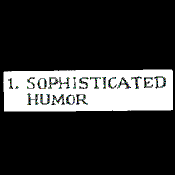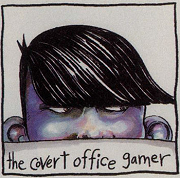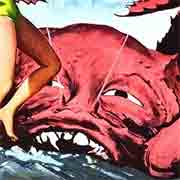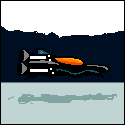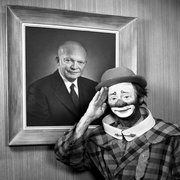|
Nenonen posted:They are nothing more than his stories. Ever read Plutarch?
|
|
|
|

|
| # ? May 27, 2024 18:13 |
|
Nenonen posted:It looks like the chasm wasn't visible until a snow 'bridge' collapsed under the vehicle? Dunno. If this is the same vehicle then it looks like it was recovered. That's a snowcat from Fuch's expedition, which was the first overland crossing of Antarctica. All the Sno-Cats survived, but they took several of these things, which were abandoned:  They were also beaten to the pole by Ed Hillary's support team with some converted Massey-Fergusson tractors: 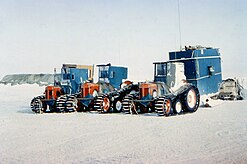
|
|
|
|
Acebuckeye13 posted:
There is a commonly understood definition of 'historical fiction' which defines it as replicating the social and physical context of past periods, rather than just a series of events. This is how Walter Scott can be seen as the first writer of historical fiction, in the early 19th century. You might challenge that definition, but cheerfullydrab wasn't saying anything stupid. Shakespeare never made any attempt to ground And it wasn't just a case of Shakespeare lacking the knowledge to write accurate histories. For example in Henry VI, Richard III says he "sets the murderous Machevil to school," at a point in time when Machiavelli was either not born, or a babe in arms. Likewise there's a reference to Aristotle in Troilus and Cressida. These anachronisms wouldn't have been hard to pick up on, given what we can assume about Shakespeare's level of education and the sources he had available to him. It seems it just wasn't something that he was interested in doing.
|
|
|
|
Arctic expedition vehicles? Don't forget about the Snow Cruiser. http://www.joeld.net/snowcruiser/snowcruiser.html 
|
|
|
|
 Snow Cruiser. It was too good for this world. Snow Cruiser. It was too good for this world.But yes, I do love terra tracks. If I had to build a light armored vehicle I would try to figure out a way to use them. Keldoclock fucked around with this message at 18:17 on Nov 15, 2015 |
|
|
|
100 Years Ago The British Empire begins its final advance on Baghdad, step by step, cautious, taking no chances, carefully leapfrogging up the river. General Cadorna hits the pause button on Fourth Isonzo, Winston Churchill resigns from the Government, Wully Robertson is privately certain that he and General Haig will soon be Chief of the Imperial General Staff and Commander-in-Chief of the BEF respectively, the weather is starting to go to hell on Gallipoli (it's still mostly dry and no longer steaming hot, but gales and severe gales are becoming a daily occurrence), and one of Louis Barthas's grenadiers goes in front of Commandant Quinze-Grammes after yesterday's outbreak of malicious malingering.
|
|
|
|
Antarctic vehicles, you say? Why not use tanks? Here's how well that worked
|
|
|
|
Ensign Expendable posted:Antarctic vehicles, you say? Why not use tanks? Those tanks look like they have very narrow tracks. Isn't that...the opposite of what you want in the Antarctic? C.M. Kruger posted:Arctic expedition vehicles? Don't forget about the Snow Cruiser. That looks like something out of Thunderbirds
|
|
|
|
MikeCrotch posted:Those tanks look like they have very narrow tracks. Isn't that...the opposite of what you want in the Antarctic? Since this occurred before WWII, these were the only tanks the Americans had. But you are right about that. They had to remove the turret and all of the armor on these light tanks to keep them from sinking into the snow.
|
|
|
|
Can any of the native German speakers here, or maybe someone with more familiarity with the history of the language than I have, tell me when it became unfashionable to salt your language with Latin and French terms? Because in that essay on letters found addressed to some of Tilly's soldiers, the author mentions all the foreign words and says (1) it's typically 17th century and (2) it's terrible. I like the snarled untidiness of 17th century German, like there's a woman in these letters who calls the soldier she's writing to her "herzallerliebsten Schatz," her "heart's-all-the-most-beloved treasure" and that's cool. It's also an extremely forgiving language, if the Czechs speaking Italian that are, I think, the primary demographic here can't think of a German word, why, just slap a German declension ending on a word from any one of half a dozen other languages and you're good to go! HEY GUNS fucked around with this message at 22:16 on Nov 15, 2015 |
|
|
|
I'm fairly sure that German went through a fairly similar process to Polish in roughly that period. The 16th and 17th centuries were a time when putting Latin and Italian into language was the norm in educated circles (i.e. 90% of people who wrote regularly), then by the 18th century (closer to late 18th century in Poland) the Enlightenment ideals roll in and a lot of really smart people start figuring that this is corny as hell. So they start inventing local equivalents to terms that did not have them before, especially scientific ones. This process lasts well into the 19th century. This is where the names and naming conventions for things like the elements and chemical processes, a lot of medical stuff, some physics things too, I guess. My favourite anecdote about this is how in 99% of languages the name for oxygen is scientifically inaccurate. This word, in Greek, is made up of ὀξύς - "acid" - and γείνομαι - "birthing". People back then believed that acids can only be formed if oxygen is present, hence the name. Latin takes it as is, Romance languages take it straight from Latin, English takes it from French and so on. German has "Sauerstoff", Russian has "кислород", both are the same thing. And so it goes on, and on, and on. But, as you may have surmised, later on people have realised that there are acids that have no oxygen. And when the Poles started inventing their names for elements, someone decided that calling it "kwasoród" was stupid because of that. I don't remember the guy's name, but he suggested it should be called "tlen" instead, from "tlić", meaning "to burn"*, because you positively do need oxygen to burn poo poo. And that is how Polish became the world's most scientifically accurate language. To a degree. *I'm not sure about then, but today the word is rare enough that 99% of Poles would never realise the connection unless it is pointed out to them.
|
|
|
|
HEY GAL posted:Can any of the native German speakers here, or maybe someone with more familiarity with the history of the language than I have, tell me when it became unfashionable to salt your language with Latin and French terms? Because in that essay on letters found addressed to some of Tilly's soldiers, the author mentions all the foreign words and says (1) it's typically 17th century and (2) it's terrible. 19th century German is still full of barely-Germanized French and Latin words. The thing the Czechs did still works, to a degree. The word most Germans use for downloaded is gedownloaded (downgeloaded is also a possibility and closer to the literal German translation, so of course the joke everyone uses is gedowngeloaded).
|
|
|
|
Acebuckeye13 posted:
I'm thinking less "history as shown through their eyes", like Michael Shaara or something like that, which is what historical fiction has increasingly come to mean, and more Elizabethan ideas of history used as setting. Shakespeare tells historical events like he's putting a new spin on old myths, and he uses historical settings like he might some other country. He never "intended" his plays to be honest renditions of historical events, which is the part of the Onion article I took issue with, which is where this derail started.
|
|
|
|
Tevery Best posted:I'm fairly sure that German went through a fairly similar process to Polish in roughly that period. The 16th and 17th centuries were a time when putting Latin and Italian into language was the norm in educated circles (i.e. 90% of people who wrote regularly), then by the 18th century (closer to late 18th century in Poland) the Enlightenment ideals roll in and a lot of really smart people start figuring that this is corny as hell. So they start inventing local equivalents to terms that did not have them before, especially scientific ones. This process lasts well into the 19th century. This is where the names and naming conventions for things like the elements and chemical processes, a lot of medical stuff, some physics things too, I guess. Your language is still an abomination unto god.
|
|
|
|
Tevery Best posted:My favourite anecdote about this is how in 99% of languages the name for oxygen is scientifically inaccurate. This word, in Greek, is made up of ὀξύς - "acid" - and γείνομαι - "birthing". People back then believed that acids can only be formed if oxygen is present, hence the name. Latin takes it as is, Romance languages take it straight from Latin, English takes it from French and so on. German has "Sauerstoff", Russian has "кислород", both are the same thing. And so it goes on, and on, and on. We really should've stuck with "phlogiston"
|
|
|
|
ArchangeI posted:19th century German is still full of barely-Germanized French and Latin words. edit: wait, does anyone still say Pique, Musquet, or Compagnie?
|
|
|
|
HEY GAL posted:and then what happened? so many of the words i'm familiar with are either fully assimilated now (probably, nobody stops to think that Pique, Musquet, and Compagnie are French)...or they're gone, to be replaced with purely german equivalents. when were they gotten rid of? was there some sort of national campaign to stop all that? I'm far from an expert, but if I recall right there was a strong effort under Bismarck to germanize the language in Germany. Austrian German notably didn't undergo the same Eindeutschung so we still drink our Melange on the Fauteuil.
|
|
|
|
Do you want me to language sperg? Cause I can.
|
|
|
|
Xiahou Dun posted:Do you want me to language sperg? either that or some german speaker who took a class in 17th century lit, like i remember jauchecharly asking me why i read that poo poo without being forced to lol HEY GUNS fucked around with this message at 02:00 on Nov 16, 2015 |
|
|
|
Fine I'll type something up during office hours tomorrow. Short version : language standardization is weird, yo.
|
|
|
|
Who here can tell me more about the Anglo-Soviet invasion of Iran in 1941?
|
|
|
|
I've always been interested in the Falklands War. I'm pretty familiar with most of the high-level strategic stuff; any recommendations books concerning tactics or the experiences of men on the ground/at sea?
|
|
|
|
This might be a question more for the cold war thread but I can't really find it, so: In WW2 when armour's involvement in war is big, infantry aren't exactly left in the dust. There's a lot in the way of man-portable and towed/pushed field guns that can give a tank a bad day, and even beyond that infantry have some ways of causing tanks to remember they're there and they should be concerned, from early war antitank rifles to bazookas and panzerschreks. Infantry probably don't really want to fight tanks if they can help it, but it's not like they can just trundle on through if there's infantry about. Cold war, though, sees the introduction of composite armour and ERA that makes shaped charges vastly less threatening; this is an issue for things like RPGs and missiles that are presumably sitting near the pazooka/schreck/PIAT kind of role. And this might just be my lack of knowledge, but modern armies don't seem to have things equivalent to gun carriages anymore. So, between the severe attenuation of HEAT's usefulness and counter-countermeasures (if that's a word) to HEAT like tandem charges, what were infantry expected to do if things came to blows in the cold war? I figure most infantry of the period are mechanised or airmobile, so presumably they have an IFV or chopper weapon that can fire shells tanks care about or something, but when dismounted, what do they do when the tanks roll in or they hit the armour part of their attack? I suppose the obvious answer is "shoot the other guy's infantry", but why'd he have infantry in that case? Were infantry actually anticipated to be that important in a potential WW3, or were they a more "specialist" kind of thing for getting dropped off at soft targets while their IFV did the front-line fighting or getting into fiddly areas you can't fly helicopters into like buildings and fortifications?
|
|
|
|
spectralent posted:This might be a question more for the cold war thread but I can't really find it, so: You have it the wrong way round. Developments in HEAT led developments in armour for quite a long while. Arguably, even today, infantry anti-tank abilities can give tanks more advanced than themselves a bad time, given the element of surprise, a bit of luck, and superior numbers.
|
|
|
|
Wasn't it the case that the introduction of armoured composites suddenly reversed the entire thing, though? Or were man-portable antitank missiles and such still capable of giving a composite tank a bad day? I'm aware post WW2 up to... I think it was mid 60s? HEAT meant that tanks were primarily dispensers of explosive hate (IIRC this is why the Leopard's armour was comparatively weak, it was expected it'd be up against HEAT rounds that'd make armour irrelevant); but I had thought that composite armours and ERA reversed the situation abruptly leading to adoption of sabot and DU ammo for tanks. It's specifically that bit of time I'm thinking of; between countermeasures for HEAT existing and better shaped charges that overcome them being introduced. Or was that period never really a big deal and it was more like going from "certain death" to "probable death"?
|
|
|
Fangz posted:You have it the wrong way round. Developments in HEAT led developments in armour for quite a long while. Arguably, even today, infantry anti-tank abilities can give tanks more advanced than themselves a bad time, given the element of surprise, a bit of luck, and superior numbers. Of course, then you get tanks like the Leopard 1 where the developers looked at the evolution of HEAT rounds, looked at their armor, and shrugged. "Why bother? It'll get penetrated anyway." So you're left with a main battle tank that can be penetrated by anything above 30mm autocannons with contemporary ammo (and can be penetrated by autocannons with modern AP ammo). Then they looked at how 50s and 60s tanks faired in the Yom Kippur war against new wire-guided missiles and then "Oh poo poo, maybe we really do need some kind of protection." Hence the Leopard 2.
|
|
|
|
|
HEAT might not be able to penetrate a tank frontally, but infantry don't just sit there shooting at the front of tanks all day.
|
|
|
|
xthetenth posted:HEAT might not be able to penetrate a tank frontally, but infantry don't just sit there shooting at the front of tanks all day. see the trick is ya gotta go for that rear penetration
|
|
|
|
xthetenth posted:HEAT might not be able to penetrate a tank frontally, but infantry don't just sit there shooting at the front of tanks all day. With top attack missiles, you can shoot at a tank frontally while still doing a "flanking" attack.
|
|
|
|
Have non-explosive tank traps ever been tried? I'm talkiing about like a ditch with fake road surface or whatever on top of it.
|
|
|
|
golden bubble posted:With top attack missiles, you can shoot at a tank frontally while still doing a "flanking" attack. That, and if infantry habitually carry weapons that can penetrate tanks' sides, then tanks have to be careful about going into positions that expose their sides.
|
|
|
|
Grand Prize Winner posted:Have non-explosive tank traps ever been tried? I'm talkiing about like a ditch with fake road surface or whatever on top of it. The Soviet partisan manual covers a number of such traps, such as pits and deliberately iced over slopes.
|
|
|
|
Grand Prize Winner posted:Have non-explosive tank traps ever been tried? I'm talkiing about like a ditch with fake road surface or whatever on top of it. 
|
|
|
|
spectralent posted:Wasn't it the case that the introduction of armoured composites suddenly reversed the entire thing, though? Or were man-portable antitank missiles and such still capable of giving a composite tank a bad day? HEAT was quite dominant during the '60s, but it never remplaced kinetic rounds for tank use in most cases. The only army that can think of that did eschew AP rounds entierely for a while was the French, with the complex ball bearing stabilised Obus G HEAT round for the AMX 30. Basically everyone else used kinetic rounds as the main anti-armor round, from full AP and APCR to APDS in the '60s and APFSDS in the late '70s onward. They issued HEAT rounds for tank use but it was in most cases not the first choice, especially early on as HEAT rounds had trouble fusing if the armor was at more than a 60 degrees angle or so. The reason is that HEAT rounds are compromised in several ways when fired out of a gun, especially a rifled one. The diameter is limited by the gun caliber, and constricted even further by the walls of the shell, meaning you have quite hard limits on the penetration of the HEAT round, as it's mainly derived from the warhead diameter. It's degraded even more when fired out of a rifled gun, as the spin also degrades performance significantly, since the centrifugal force tends to pull the HEAT jet apart and cause it to break up much earlier. There was also the issue of making fuses that worked reliably at high velocities and high angles of impact, so for a while HEAT rounds were limited to relatively low velocities, which made for difficult aiming. All in all it was and still is mostly the realm of ATGMs and RPGs, where the velocities are fairly low anyway, there is no spin and it's much easier to increase the projectile diameter. While the introduction of composite armor did improve HEAT protection, the response was simply to increase the size of the warheads, and even modern armor arrays are still vulnerable to sufficiently 'gently caress off' sized HEAT warheads. By the time armor got good enough to counter reasonably man portable launchers, electronics and guidance had improved enough for top attack systems like TOW-2B and Javelin to be a thing. So no, infantry is still not out of the gun/armor race, it still goes on and will still go on for a while. EDIT : Also i should note that RPG type weapons never were designed to take on tanks from the front (If only because that's where you are the most likely to be spotted) and they were more or less never able to do so reliably. Kafouille fucked around with this message at 06:38 on Nov 16, 2015 |
|
|
|
BTW, the Military Ration Thread has been open at GWS for a while now and it owns owns owns. Grand Prize Winner posted:Have non-explosive tank traps ever been tried? I'm talkiing about like a ditch with fake road surface or whatever on top of it. We've got a couple of oldschool trapezoidal concrete bollards that aren't attached to the ground and i call them dragon teeth now.
|
|
|
|
spectralent posted:This might be a question more for the cold war thread but I can't really find it, so: Did you ask the same question on /hwg/ by any chance?
|
|
|
|
spectralent posted:This might be a question more for the cold war thread but I can't really find it, so: Helicopters die in the face of really any sort of opposition and they're extremely expensive and generally not that great for moving heavy equipment, so tactical airmobile is a very, very specialized subset.
|
|
|
|
Re. HEAT weapons, there is always the fact that HEAT weapons are still being constantly developed (the latest version of the RPG was made in 2012) and you don't need to penetrate the actual hull to have a mission kill - you could knock out a track, put a hole in the gun or just knock off a load of the outer equipment and generally ruin the tanks day.
|
|
|
|
SlothfulCobra posted:We really should've stuck with "phlogiston" I believe you mean "dephlogisticated air".
|
|
|
|

|
| # ? May 27, 2024 18:13 |
|
spectralent posted:This might be a question more for the cold war thread but I can't really find it, so: Along with the above, I think you underestimate the capabilities of warheads like the RPG-7V. These later HEAT rounds could still penetrate anywhere in the neighborhood of 260-600mm of RHA, depending on time frame and variant. You can count the number of even brand new tanks with that kind of side hull protection on one hand. Most tanks were only truly well protected from the front, and even with ERA (which really only showed up in useful quantities in the 80s) most tanks still have large areas of vulnerability to the side and rear. Honestly, the best example you can get is all the videos from Syria and such were people shoot things like Konkurs, RPG-7V+s and TOWs at cold war-esque armor. In most cases, the tank is very dead. Armor without infantry support is very vulnerable to all sorts of poo poo, because tanks have limited visibility and mobility in all but the most barren terrain. Infantry had, has and will have a very important role in modern combat that doesn't involve religious tactical nuclear weapons because there are simply too many important things you cannot do without boots on the ground. Mazz fucked around with this message at 10:52 on Nov 16, 2015 |
|
|




